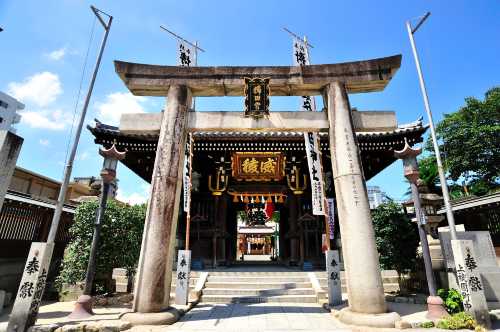Popular Trip Moments
Japan's Hawaii | Unlock the perfect healing route in Kyushu | Millions of flowers waiting for you here | Fukuoka 5 Days Itinerary | A place to experience the essence of Japanese traditional culture, Kushida Shrine. | On a day when you need a quiet mind, Kushida Shrine | Kushida Shrine, a place where the old spirit of Hakata still remains intact. | The Ritz-Carlton, Fukuoka | Fukuoka's hidden haven, Ohori Park | ⛩️ Sumiyoshi Shrine, Walking through the old silence | A small comma in the city, Sumiyoshi Shrine | 🗼 Fukuoka Tower, Where the Sky and the Sea Meet 🌊✨ | "Rakusuien, a garden where even the wind lingers slowly" | A small but deep rest in the city, Rakusuien | 🌊Fukuoka Treasure Land | Momochi Seaside Park, encounter seaside romance | Fukuoka | Anpanman fans must go to heaven🥖 | [Fukuoka] Delicious Greek yogurt with seasonal fruits 🍠 | Secret location for anyone going to Fukuoka during cherry blossom season | A Relaxing Corner in Fukuoka—HANAMONOGATARI + HAMORU CAFE | Biwa Bridge Park|Poetic Talk in Spring | Fukuoka's Coffee Aroma—ACROASTER | Miao Fa Temple|Vermilion Tranquility | [Fukuoka] A fantastic nighttime Fukuoka Castle Sakura Festival🏯 | Fukuoka Store Visit | Encounter Maitri Handmade Brass Jewelry💍 | A Night at Fukuoka Castle: Where History Meets Light | Recommended hotels with public baths in Fukuoka | Fukuoka Shop Exploration | A Treasure Trove of Vintage Furniture in Yakuin 🪑 | [Hakata, Fukuoka Prefecture🇯🇵 Hanamidori Kawabata Street Store] When you think of Fukuoka, you think of Mizutaki ☺️ A truly satisfying restaurant | ✨Tokyo's top choice for luxury accommodation|Hotel IL Palazzo✨ | Fukuoka store exploration | Abeiki Cafe, where the aroma of cheesecake makes you fall in love with it🥰 | A collection of 3 of my favorite bakeries in Fukuoka
Recommended Attractions at Popular Destinations
Bangkok attraction near me | Manila attraction near me | Tokyo attraction near me | Taipei attraction near me | Hong Kong attraction near me | Seoul attraction near me | Kuala Lumpur attraction near me | Los Angeles attraction near me | Shanghai attraction near me | New York attraction near me | Shenzhen attraction near me | Osaka attraction near me | Singapore attraction near me | London attraction near me | Guangzhou attraction near me | San Francisco attraction near me | Beijing attraction near me | Macau attraction near me | Bali attraction near me | Jakarta attraction near me | Paris attraction near me | Ho Chi Minh City attraction near me | Istanbul attraction near me | Phuket attraction near me | Chicago attraction near me | Seattle attraction near me | Toronto attraction near me | Orlando attraction near me | Cebu attraction near me | Chiang Mai attraction near me
Popular Restaurants in Fukuoka
Chikae Fukuoka | Hilton Fukuoka Sea Hawk Chinese Restaurant Bokairo | Steak House Medium Rare | Brasserie & Seala Lounge | Renxingting jinban (JR boduo City ) | Hakata Robata Fishman | Restaurant Sola | Kappō Yoshida | Bar & Dining Clouds | Raisin d'Or | Chikamatsu | Kinyotei | 博多もつ鍋 やま中 赤坂店 | Nikuichi | Shirogane Sabo | Kalonoulon | Yoshizuka Unagi | Yakiniku (Grilled meat) Champion Hakataeki | Genkiya Matsusuke | Shoku Shin Shungetsu | Hama no French | Benkei | Motsunabe Yamanaka Honten | Wolfgang's Steakhouse Fukuoka | Hyotan Sushi | Yamazato | Cafe Serena | Charcoal Grill Keyaki | The Lounge on the Water | Main Dining Cabana
Popular Ranked Lists
Top 7 Luxury Hotels in Galle | Popular Local Restaurants in Xi'an | Top 16 Local Restaurants in Sydney | Popular Luxury Hotels Near Recreio dos Bandeirantes | Popular Local Restaurants in Beijing | Popular Best Things to Do in Zhongxiang | Top 5 Best Things to Do in Xiangshan | Popular Local Restaurants in Bangkok | Popular Premium Hotels Near Geraldine | Top 3 Best Things to Do in Shengsi | Popular Local Restaurants in Nagoya | Popular Best Things to Do in Xing'an County | Top 18 Local Restaurants in Busan | Popular Luxury Hotels in Al Ula | Popular Best Things to Do in Jinchang | Top 18 Local Restaurants in Kunming | Popular Luxury Hotels Near Tonosho | Top 4 Best Things to Do in Guigang | Popular Luxury Hotels Near Montelimar | Popular Local Restaurants in Sanya | Top 3 Best Things to Do in Fuzhou | Popular Luxury Hotels in Kieni East | Popular Luxury Hotels Near Etretat | Popular Luxury Hotels Near Fort William | Top 5 Best Things to Do in Danzhou | Top 8 Luxury Hotels in Hurghada | Top 3 Luxury Hotels in Dhaka | Top 5 Best Things to Do in Tongliao | Top 3 Best Things to Do in Zhoukou | Top 4 Best Things to Do in Changzhi
Payment Methods
Our Partners
Copyright © 2025 Trip.com Travel Singapore Pte. Ltd. All rights reserved
Site Operator: Trip.com Travel Singapore Pte. Ltd.
Site Operator: Trip.com Travel Singapore Pte. Ltd.













